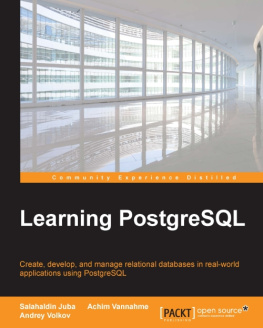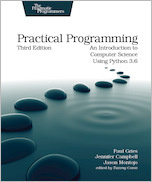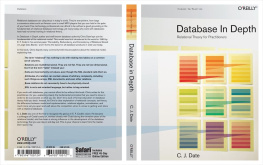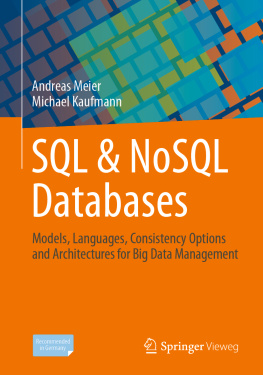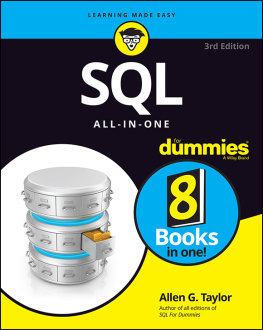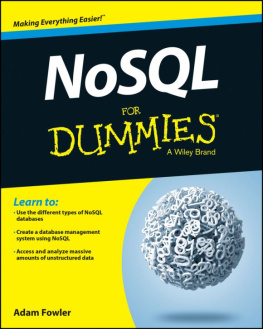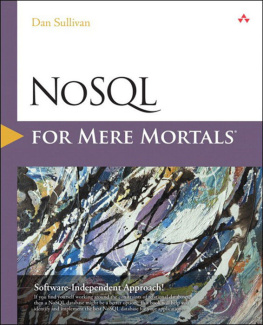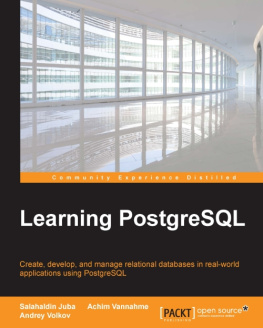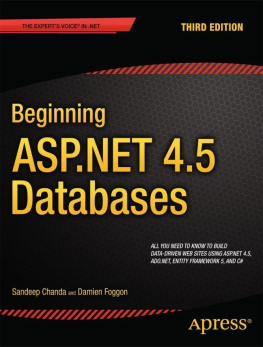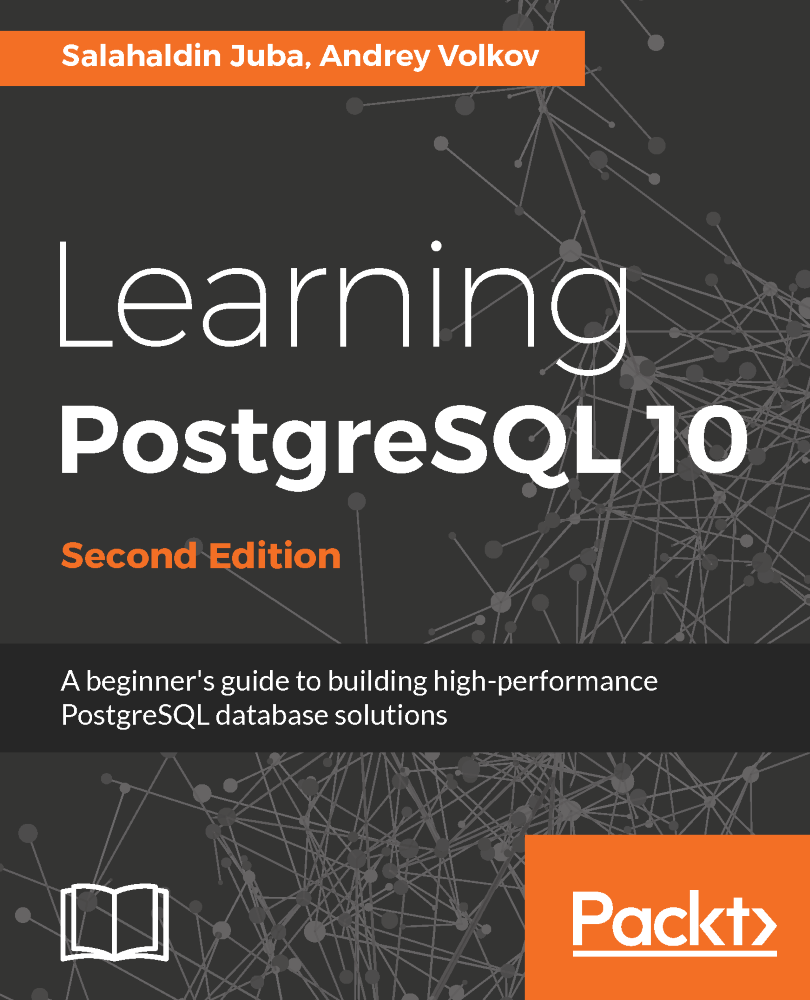
Learning PostgreSQL 10
Second Edition
A beginners guide to building high-performance PostgreSQL database solutions
Salahaldin Juba
Andrey Volkov
BIRMINGHAM - MUMBAI
Learning PostgreSQL 10
Second Edition
Copyright 2017 Packt Publishing
All rights reserved. No part of this book may be reproduced, stored in a retrieval system, or transmitted in any form or by any means, without the prior written permission of the publisher, except in the case of brief quotations embedded in critical articles or reviews.
Every effort has been made in the preparation of this book to ensure the accuracy of the information presented. However, the information contained in this book is sold without warranty, either express or implied. Neither the authors, nor Packt Publishing, and its dealers and distributors will be held liable for any damages caused or alleged to be caused directly or indirectly by this book.
Packt Publishing has endeavored to provide trademark information about all of the companies and products mentioned in this book by the appropriate use of capitals. However, Packt Publishing cannot guarantee the accuracy of this information.
First published: November 2015
Second Edition: November 2017
Production reference: 1231117
Published by Packt Publishing Ltd.
Livery Place
35 Livery Street
Birmingham
B3 2PB, UK.
ISBN 978-1-78839-201-3
www.packtpub.com
Credits
| Author Salahaldin Juba
Andrey Volkov | Copy Editors Tasneem Fatehi Safis Editing |
| Reviewers Dr. Isabel M.D. Rosa Sheldon E. Strauch | Project Coordinator Manthan Patel |
| Commissioning Editor Amey Varangaonkar | Proofreader Safis Editing |
| Acquisition Editor Varsha Shetty | Indexer Rekha Nair |
| Content Development Editor Aaryaman Singh | Graphics Tania Dutta |
Technical Editor
Dinesh Chaudhary | Production Coordinator Melwyn Dsa |
About the Authors
Salahaldin Juba has over than a decade of experience in the industry and academia, with a focus on database development for large-scale and enterprise applications. He holds a master's degree of science in environmental management with a distinction, and a bachelor's degree of engineering in computer systems. He is also a Microsoft Certified Solution Developer (MCSD).
He has worked mainly with SQL server, PostgreSQL, and Greenplum databases. He has developed applications for scientific communities to process GIS information in a distributed manner, and he has participated in many international projects and standards for image processing during his work in the academic sector.
As a software engineer, he works mainly with defining ETL processes with external parties, defining software solution, promoting SQL best practices, designing OLTP and OLAP application, scouting and evaluating new technologies, and providing training and consultation services.
I would like to express my deepest gratitude to my colleague Andrey Volkov for making this work possible. Also, I would like to thank all the people who provided support, especially the team at Packt for their great support and feedback with proofreading, design, comments, and remarks. I would also like to thank my family for their support despite all of the time that I had to devote to this book over them. Finally, very warm and deep thanks to my late father, Ikrayem Juba, for his utmost support, help, and guidance.
Andrey Volkov has studied information systems in banking. He started his career as a financial analyst in a commercial bank. Using databases as a main tool in his work, he realized that querying the database directly and mastering SQL is much more efficient for ad hoc analysis than using any visual reporting software. He joined the data warehouse team, and after some time, he lead the team by taking the position of the data warehouse architect.
He has worked mainly with Oracle and used to develop logical and physical models of financial and accounting data, implement them in the database, develop ETL processes, and perform analytical tasks. He was also responsible for teaching the users how to use the data warehouse and BI tools. SQL training was also a part of that work.
After 10 years in the financial sector, he changed his field and now works as a senior database developer in a telecommunications company. Here, he works mainly with PostgreSQL databases, being responsible for data modeling and implementing physical data structures, developing stored procedures, integrating databases with other software components, and developing a data warehouse.
Having a lot of experience with both Oracle and PostgreSQL--the leading commercial and one of the most advanced open source RDBMSes--he is able to compare them and recognize and evaluate the key advantages of both of them. Working as a software developer and implementing different kinds of database applications, as well as working as a business analyst and using databases as a tool for analysis, let him learn and understand different database features in different use cases. This experience made him able and willing to work on this book.
I would like to thank my wife and son for their support and for letting me work on weekends and evenings. Big thanks to the editors team for their support, guidance, and organization. And most of all, I would like to thank the main author of the book, Salahaldin Juba, who invited me to work on the book, introduced me to the team, and, in fact, has done most of the work.
About the Reviewers
Dr. Isabel M.D. Rosa has been a Marie Skodowska-Curie Research Fellow since May 2016 at the German Centre for Integrative Biodiversity Research (iDiv). Born in Lisbon, Portugal, in 1986 she holds a BSc in forestry engineering (2007), an MSc in natural resources management (2009) from the University of Lisbon, and a PhD in computational ecology (2013) from Imperial College London in the United Kingdom. She is the PI of the research project Using Land Cover Change Models to Address Important Conservation Issues funded by H2020-MSCA-IF-2015. She also has contributed to two international projects as a team member since 2013, including one European-funded project supported with 1.5 M budget (Terragenesis, ERC-2011-StG_20101109). She is the author of 15 peer-reviewed publications in scientific journals such as Nature Ecology and Evolution, Current Biology and Global Change Biology, accumulating 252 citations (Google citations, October 2017), H index = 8. During her academic career, she has acquired several skills, such as statistical analysis, programming (R, C++, and Python), working with geographic information systems (ArcGIS and QGIS), and creating databases (PostgreSQL/PostGIS and SQLServer). She also reviewed the book
Next page

